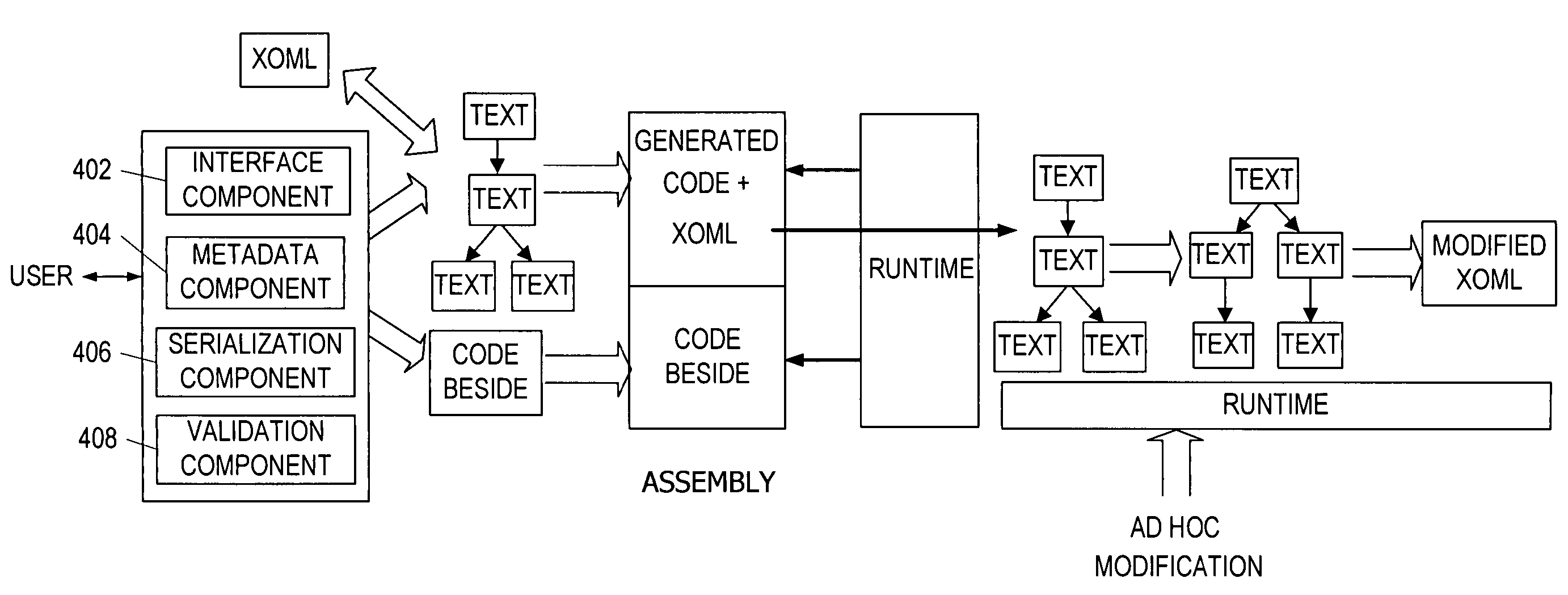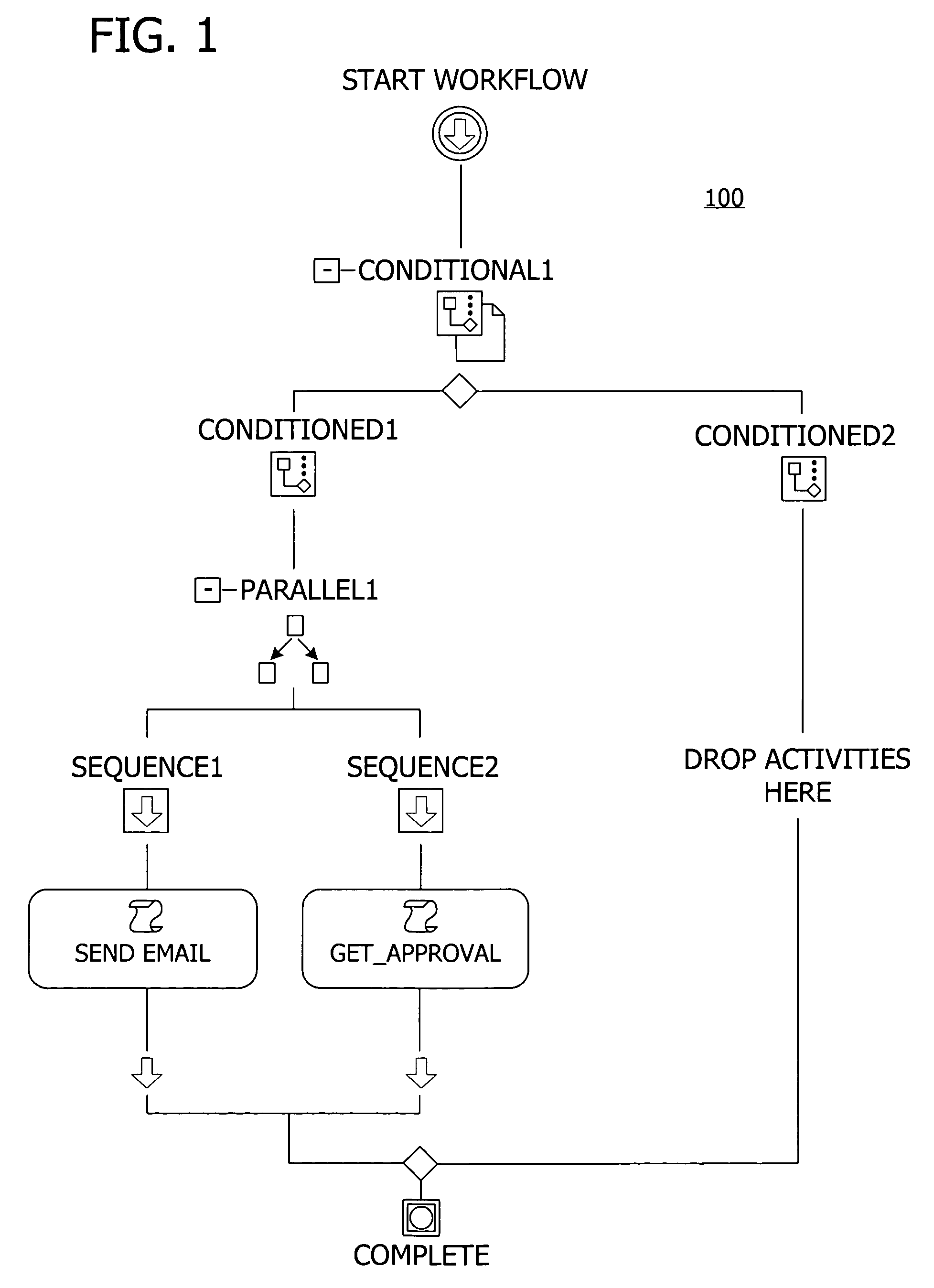Declarative representation for an extensible workflow model
a workflow model and explicit representation technology, applied in the field of workflow modeling, can solve the problems of not being able to fully extend the application, not having a programmable model, and not being able to accommodate all these factors, and achieve the effect of expanding the workflow model
- Summary
- Abstract
- Description
- Claims
- Application Information
AI Technical Summary
Benefits of technology
Problems solved by technology
Method used
Image
Examples
Embodiment Construction
[0032]Embodiments of the invention model a workflow representing a process such as a business process. Business processes are dependant and ordered tasks, activities, or the like that result in predictable and repeatable outcomes. Including an organization's operating procedures, institutional working knowledge, and information resources, business processes are designed to satisfy defined business objectives in an efficient and timely manner. In an efficient environment, the functional components of a process can be readily identified, adapted, and deployed to address ever-changing corporate requirements. The workflow is an end user's experience interacting with the tasks in a business process. Tasks are modeled as activities, components, or the like, each representing a unit of work that is performed by a person or machine. In one embodiment, a plurality of activities is presented to a user. The user selects and organizes the activities to create the workflow. The created workflow ...
PUM
 Login to View More
Login to View More Abstract
Description
Claims
Application Information
 Login to View More
Login to View More - R&D
- Intellectual Property
- Life Sciences
- Materials
- Tech Scout
- Unparalleled Data Quality
- Higher Quality Content
- 60% Fewer Hallucinations
Browse by: Latest US Patents, China's latest patents, Technical Efficacy Thesaurus, Application Domain, Technology Topic, Popular Technical Reports.
© 2025 PatSnap. All rights reserved.Legal|Privacy policy|Modern Slavery Act Transparency Statement|Sitemap|About US| Contact US: help@patsnap.com



